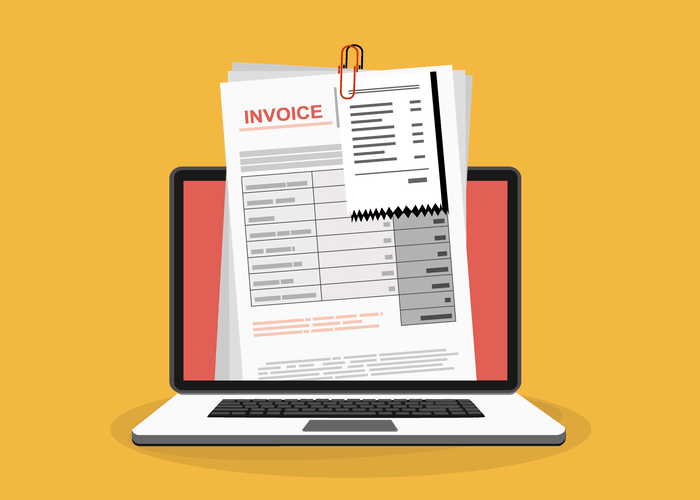
Capital Stock: Everything You Need to Know
Content
- How to Account for Issuance of Par Value Shares
- What Happens to Shareholder’s Equity When the Firm Issues More Shares?
- Par Value of Common Stock
- Does a Stock’s Current Market Price Affect Its Paid-In Capital?
- Capital Stock Examples: Apple (NASDAQ: AAPL) and Netflix (NASDAQ: NFLX)
- What are outstanding shares?

200,000,000 shares are designated as nonvoting common stock, 7,440,362 shares of which will be outstanding as of the consummation of the offerings. Another theory of share price determination comes from the field of Behavioral Finance. According to Behavioral Finance, humans often make irrational decisions—particularly, related to the buying and selling of securities—based upon fears and misperceptions Capital Stock of outcomes. The irrational trading of securities can often create securities prices which vary from rational, fundamental price valuations. For instance, during the technology bubble of the late 1990s (which was followed by the dot-com bust of 2000–2002), technology companies were often bid beyond any rational fundamental value because of what is commonly known as the « greater fool theory ».

Our charter requires the approval of not less than 80% of the voting power of all outstanding shares of Goldman Sachs’ capital stock entitled to vote to amend any by-law by shareholder action or the charter provisions described in this section. Those provisions will make it more difficult to dilute the anti-takeover effects of our by-laws and our charter. Our charter provides that a director of Goldman Sachs will not be liable to Goldman Sachs or its shareholders for monetary damages for breach of fiduciary duty as a director, except in certain cases where liability is mandated by the Delaware General Corporation Law.
How to Account for Issuance of Par Value Shares
The following are answers to some of the most common questions investors ask about capital stock. The value of capital stock is typically a combination of its paid-in capital based on par value and its additional paid-in capital.
In « no par value states, » the corporation would report the entire $10 million in the common stock account in the shareholders’ equity section. Capital stock refers to the shares of ownership that have been issued by a corporation. The amount received by the corporation when its shares of capital stock were issued is reported as paid-in capital within the stockholders’ equity section of the balance sheet. Preferred stock is listed first in the shareholders’ equity section of the balance sheet, because its owners receive dividends before the owners of common stock, and have preference during liquidation.
What Happens to Shareholder’s Equity When the Firm Issues More Shares?
The EMH model does not seem to give a complete description of the process of equity price determination. In recent years it has come to be accepted that the share markets are not perfectly efficient, perhaps especially in emerging markets or other markets that are not dominated by well-informed professional investors.
- Short selling consists of an investor immediately selling borrowed shares and then buying them back when their price has gone down (called « covering »).
- We also discuss how human capital growth interacts with the impact of population aging on population dividends.
- Between 1602 and 1796 it traded 2.5 million tons of cargo with Asia on 4,785 ships and sent a million Europeans to work in Asia, surpassing all other rivals.
- Instead of debiting cash and crediting common stock, a treasury stock transaction is recorded as a credit to cash and a debit — reduction — to common stock.
- So as long as the shareholders agree that the management are performing poorly they can select a new board of directors which can then hire a new management team.
- UpCounsel is an interactive online service that makes it faster and easier for businesses to find and hire legal help solely based on their preferences.
The alternative of raising direct taxes tends to be less favorable to growth in GDP and private final demand than reliance on foreign resources. However, given that most of the cut in household disposable income is born by consumption as opposed to savings and investment, the direct tax alternative is more favorable than domestic government borrowing for long-run growth in GDP and private final demand. Apple and Netflix have their own approach to recording capital stock on their balance sheets, and other companies are likely to follow their own formats, whether they combine share capital and additional paid-in capital into one entry or creating separate ones. Outstanding shares are shares that have been issued to investors and are not owned by the company. To figure out your company’s outstanding shares, simply subtract the number of treasury shares from the total number of issued shares.
Par Value of Common Stock
Shares of companies in bankruptcy proceedings are usually listed by these quotation services after the stock is delisted from an exchange. Corporations may, however, issue different classes of shares, which may have different voting rights. Owning the majority of the shares allows other shareholders to be out-voted – effective control rests with the majority shareholder . In this way the original owners of the company often still have control of the company. Our https://www.bookstime.com/ analysis covers the years from 1997, when Hong Kong returned to China, to 2018. We compare magnitudes, trends, and dynamics based on different measures of human capital, including traditional education-based human capital indexes and the Jorgenson-Fraumeni (J-F) lifetime income measure. Because of the drastic disparities in economic development within Mainland China, we compare two of its most advanced cities, Beijing and Shanghai, with Hong Kong and Taiwan.
Is money a capital good?
Money is not capital as economists define capital because it is not a productive resource. While money can be used to buy capital, it is the capital good (things such as machinery and tools) that is used to produce goods and services.
The purchase of one share entitles the owner of that share to literally share in the ownership of the company, a fraction of the decision-making power, and potentially a fraction of the profits, which the company may issue as dividends. A shareholder is an individual or company that legally owns one or more shares of stock in a joint stock company.
Does a Stock’s Current Market Price Affect Its Paid-In Capital?
Like all commodities in the market, the price of a stock is sensitive to demand. However, there are many factors that influence the demand for a particular stock. The fields of fundamental analysis and technical analysis attempt to understand market conditions that lead to price changes, or even predict future price levels. A recent study shows that customer satisfaction, as measured by the American Customer Satisfaction Index , is significantly correlated to the market value of a stock. Stock price may be influenced by analysts’ business forecast for the company and outlooks for the company’s general market segment. A stock derivative is any financial instrument for which the underlying asset is the price of an equity.

Similarly, a preferred stock balance can be calculated by multiplying the par value of the preferred stock with the number of preference shares outstanding. The par value of a stock is the initial price at which the stock is offered to the public. The shareholder protection rights may be redeemed by our board of directors for $0.01 per shareholder protection right prior to the date of the announcement by Goldman Sachs that any person has become an acquiring person.
Capital Stock Examples: Apple (NASDAQ: AAPL) and Netflix (NASDAQ: NFLX)
Treasury stock remains part of issued shares but carries restrictions such as lack of voting rights and no entitlement to dividend payments. When a company repurchases shares from the open market, treasury shares are registered as a contra equity account in shareholders’ equity section of the balance sheet. How capital stock value is reported is dependent upon whether the stock has a stated value. The dollar amount a corporation receives in exchange for shares of capital stock is reported as paid-in capital balance in the stockholders’ equity section of the company’s balance sheet. Any amount paid by investors above the par value is entered as additional paid-in capital. Preferred stock is listed first because its holders receive prioritization of dividend disbursement and liquidation over common stockholders. Each 1/100 of a share of Series A participating preferred stock and Series B participating preferred stock would have economic and voting terms equivalent to one share of common stock and nonvoting common stock, respectively.
